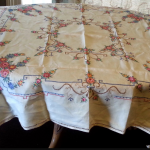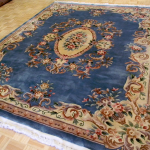Beyond Walls: Creative Ways to Use Paint in Home Decor
When it comes to home decor, paint is often relegated to merely a backdrop, a mere canvas for other elements to shine against. However, the world of interior design has been quietly evolving, transforming paint from a basic necessity into a cornerstone of creative expression. Welcome to “Beyond Walls: Creative Ways to Use Paint in Home Decor” – a blog post dedicated to unlocking the potential of paint in transforming your living spaces.
Gone are the days when paint was only seen as a tool to add colour to walls. Today, it’s a versatile medium that can infuse life, texture, and personality into every corner of your home. Whether you’re an avid DIY enthusiast or new to home styling, this post will guide you through innovative and unconventional ways to use paint. From revamping old furniture to creating intricate murals, we’re about to dive into a colourful journey that transcends traditional boundaries.
Join us as we explore how the right shade, texture, and technique can enhance your space’s aesthetics and reflect your unique style and creativity. Let’s brush aside the conventional and discover the transformative power of paint in home decor!

The Versatility of Paint
Paint is not just about colour; it’s about texture, finish, and the overall feel it imparts to a surface. The market offers a vast palette of options, from matte, satin, and glossy finishes to textured paints that add depth and dimension. Each type serves a purpose, and choosing the right one is crucial for the success of your project. Matte finishes, for instance, are great for hiding surface imperfections, while glossy finishes are ideal for areas that need to be cleaned frequently, like kitchens and bathrooms.
Understanding the surface you’re painting is as important as the paint itself. Wood, metal, plastic, and fabric interact differently with paint, and using the wrong type can lead to disappointing results. Research and preparation are key. Some surfaces might need a primer to ensure the paint adheres properly and lasts longer.
Creative Ideas for Using Paint in Home Decor
Painted Furniture
Revitalizing old furniture with paint is a sustainable and cost-effective way to give your space a fresh look. An old dresser or table can be transformed with chalk paint, creating a vintage or shabby chic look. Distressing techniques, where paint is intentionally sanded off in places to reveal the wood beneath, can add character and age to a piece. Stencilling, another popular technique, allows for intricate patterns and designs, turning a plain piece of furniture into a statement item.
Accent Features
Accent walls have long been a popular way to introduce colour into a room, but why stop at walls? Consider painting an accent ceiling or floor. A bold ceiling colour can lower the perceived height of a room, creating a cozy, intimate feel. Painting floors, whether adding a pattern, a solid colour, or even a faux rug, can dramatically change the room’s character.
Faux finishes, like marble or wood, can add a touch of elegance without the cost of the real material. These techniques require some practice but can produce stunning results that mimic the look of natural materials.
Artistic Touches
For those who want to add a personal artistic touch to their space, murals or geometric patterns can be a great option. Creating a mural requires planning – sketching the design first can help. On the other hand, geometric patterns can be achieved with the help of painter’s tape to create sharp lines and shapes. Stencils are also great for adding intricate designs to walls, floors, or even ceilings.
Functional Art
Functional items like lamp bases, vases, or shelving units can become art pieces with some paint. This adds a unique touch to the item and helps it blend into or stand out in the room, depending on the chosen colour.
Using paint to label jars and containers can add both aesthetic and functional value. For instance, a chalkboard wall in the kitchen can serve as a space for grocery lists, menus, or messages.
Textural Elements
Texture can add depth and interest to a room. Techniques such as sponging, rag rolling, or using textured paint can create a feature wall with a tactile element. These methods can be used to add a rustic feel, create a faux stucco look, or simply add dimension to a plain wall.
Colour Psychology in Home Decor
The choice of colour in a space can significantly affect the mood and ambience. Reds and oranges, known as warm colors, can imbue a space with a feeling of warmth and vibrancy, whereas cool colors like blues and greens are often associated with a calming and soothing ambiance. It’s important to consider the function of the room when choosing a colour palette. For example, calming hues might be ideal for bedrooms, while vibrant colours could energize a home office or kitchen.
Understanding colour psychology can also help create a harmonious flow throughout the house. Colours can be used to visually connect spaces or provide a contrasting accent to highlight specific areas.
Tips and Tricks for DIY Painting Projects
Essential Tools and Materials
Before starting your painting project, ensure you have the necessary tools. These include paintbrushes of various sizes, rollers, paint trays, painter’s tape, drop cloths, sandpaper, and a ladder for hard-to-reach areas. Selecting quality tools can significantly impact the ease of application and the final look.
Step-by-Step Guide
- Preparation: Begin by cleaning the surface you plan to paint. Remove dust, dirt, and grease. Remove any nails and fill holes with spackling paste if you’re painting walls.
- Sanding: For furniture or surfaces with a previous coat of paint or varnish, sanding is crucial for smoothness and better paint adhesion.
- Priming: Apply a primer to ensure uniform colour and coverage. It also helps in reducing the number of paint coats needed.
- Painting: Start with the edges using a brush, then fill in larger areas with a roller. Apply the paint in thin, even coats, letting each layer dry completely before applying the next.
- Cleanup: Clean brushes and rollers immediately after use. Seal and store leftover paint properly for future touch-ups.
Common Mistakes to Avoid
- Skipping preparation steps.
- Applying thick coats of paint.
- Painting in extreme temperatures or humidity.
- Neglecting to tape off areas to avoid uneven lines.
Incorporating Paint into Various Design Styles
Integrating Painted Elements
- Minimalist: Choose a monochromatic palette. Use subtle shades to add depth without clutter.
- Bohemian: Experiment with vibrant colours and patterns. Consider murals or painted furniture with ethnic motifs.
- Industrial: Accentuate features like pipes or brick walls with metallic or matte finishes.
- Scandinavian: Stick to light, muted colours. Add painted elements that bring warmth without overpowering the space.
Complementing Room Aesthetics
The right paint choice can enhance a room’s aesthetic. For instance, opt for lighter shades in a room with limited natural light to make it feel brighter. In large, open spaces, darker colours can create a sense of coziness.
Eco-Friendly and Safe Painting Practices
Eco-Friendly Options
A growing number of brands are now producing eco-friendly paints characterized by low levels of volatile organic compounds (VOCs) and devoid of harmful chemicals. Such paints not only enhance the indoor air quality but also promote a healthier environment both within and outside your home.
Safe Pro Painting Practices
- Ensure proper ventilation during painting and drying.
- Wear protective gear like masks and gloves.
- Keep paint away from children and pets.
- Dispose of paint and materials responsibly.
Inspiring Examples and Case Studies
Showcasing Transformations
Featuring before-and-after photos can powerfully illustrate the impact of paint on home decor. These visuals inspire and demonstrate practical applications of the techniques discussed.

Expert Insights
Incorporate interviews or quotes from interior designers and DIY enthusiasts. Their experiences can provide valuable insights and tips, adding depth and credibility to the content.
In our journey through the colourful world of paint in home decor, we’ve explored myriad ways this versatile medium can transform and enhance our living spaces. From the variety of paints available in different textures, finishes, and colours to the creative ideas for using paint beyond the walls, we have seen how paint can be a powerful tool in interior design.
We delved into how painted furniture can breathe new life into old pieces, adding personality and style. Accent features like painted ceilings, floors, and faux finishes can create stunning visual effects and add depth to any room. We also explored the artistic potential of paint, from murals to geometric patterns, and how functional items can become works of art with just a brushstroke.
Furthermore, we discussed the impact of colour psychology on home decor, emphasizing the importance of choosing the right palette to set the mood and atmosphere of a space. Practical tips and tricks for DIY painting projects were shared, ensuring that even beginners can achieve professional-looking results. We also highlighted the significance of incorporating paint into various design styles, demonstrating how it can complement and enhance aesthetics.
In addition to the creative aspects, we emphasized eco-friendly and safe painting practices, underscoring the importance of responsible and health-conscious decorating. Inspiring examples and case studies provided real-life insights and ideas, showcasing the transformative power of paint in home decor.
As we wrap up this colourful exploration, we encourage you to pick up a brush and let your creativity flow. Whether a small project like painting a vase or a larger endeavour like transforming a room, remember that the possibilities are as limitless as your imagination. Experiment with colours, textures, and techniques to create spaces that reflect your unique taste and personality.
We’d love to see how you use paint in your home decor projects. Share your experiences, photos, and ideas with us. Your creativity could inspire others and contribute to this ever-evolving art form. Paint is not just a medium; it’s an expression of who you are. So, make your mark, and paint your world beautiful!…
Read More →



